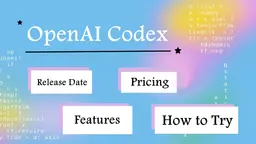什麼是 Molmo AI
Molmo AI 是由艾倫人工智能研究所 (Ai2) 創建的一系列最先進的多模態 AI 模型。於 2024 年推出,Molmo AI 致力於通過提供能夠處理視覺和文本數據的開源模型,使強大的 AI 功能民主化。Molmo 家族包括各種大小的模型,從標誌性的 720 億參數模型到適合移動設備的較小版本,所有這些模型都旨在促進與物理和虛擬環境的豐富互動。
Molmo AI 如何運作?
Molmo AI 通過將視覺編碼器與語言模型相結合,並通過多層感知器將視覺令牌投影到語言模型的輸入空間中來運行。這種架構使 Molmo 能夠解釋圖像、回答關於視覺內容的問題,甚至與用戶界面互動。與許多大型 AI 模型不同,Molmo 使用約 60 萬張高質量圖像的相對較小且精心策劃的數據集實現高性能。模型的訓練管道利用基於語音的注釋生成豐富的圖像描述,使其能夠理解複雜的視覺場景並提供詳細的、上下文相關的響應。Molmo 的指針功能使其能夠識別圖像中的特定元素,使其特別適合於機器人和網絡代理的應用。
Molmo AI 的好處
Molmo AI 的開源性質為研究人員、開發者和企業提供了顯著的優勢。它提供了先進的 AI 功能,而無需承擔專有模型的高成本。Molmo 的高效性使其能夠在較低性能的硬件上運行,使更多用戶和設備能夠使用先進的 AI。該模型的多模態功能使得能夠開發更複雜的應用程序,從改進的聊天機器人到複雜的機器人系統。此外,Molmo 的性能與或超過許多更大的專有模型,表明開源 AI 可以在最高水平上競爭,促進創新並推動人工智能的邊界。
查看更多












